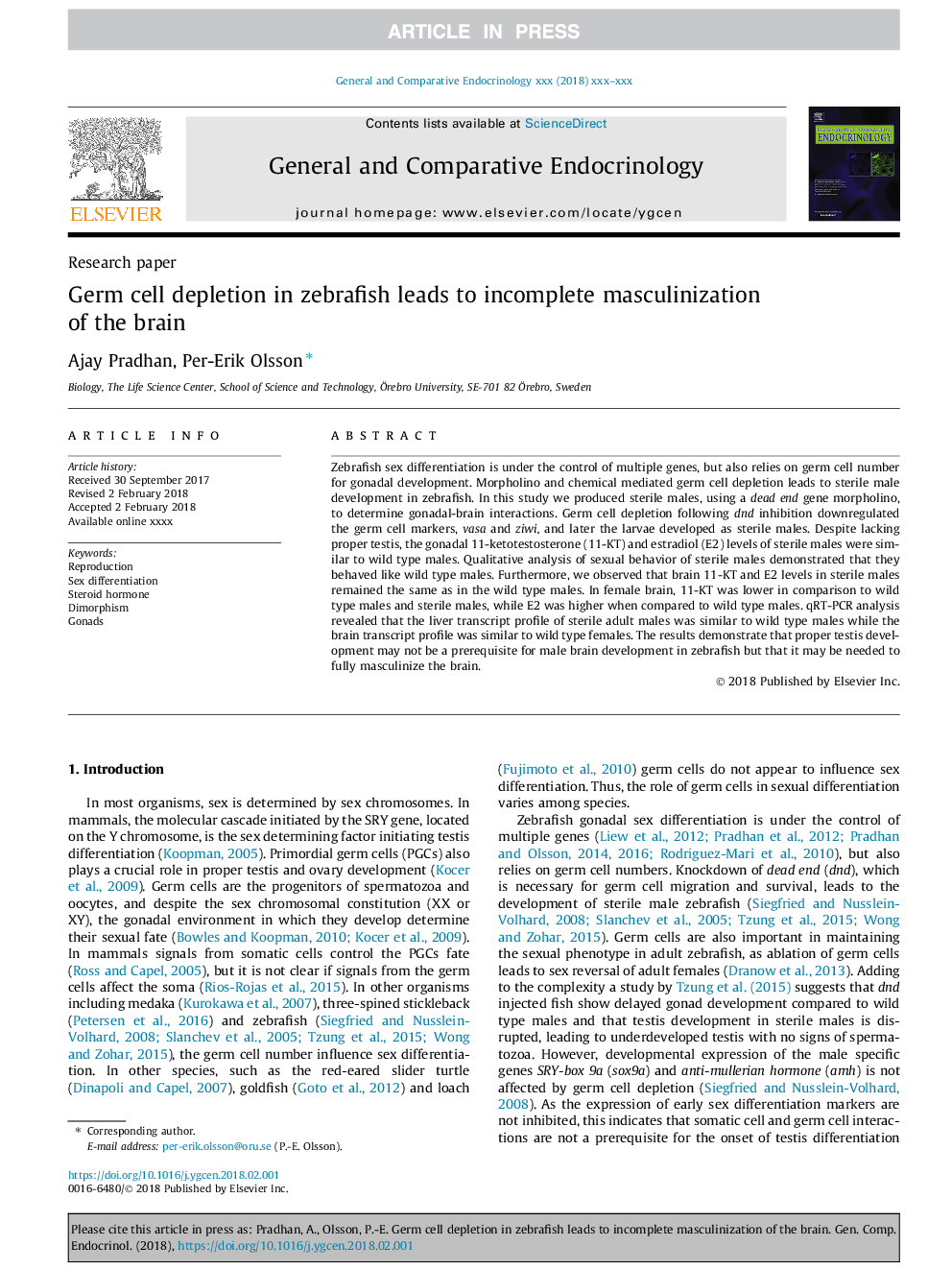| Article ID | Journal | Published Year | Pages | File Type |
|---|---|---|---|---|
| 8630692 | General and Comparative Endocrinology | 2018 | 7 Pages |
Abstract
Zebrafish sex differentiation is under the control of multiple genes, but also relies on germ cell number for gonadal development. Morpholino and chemical mediated germ cell depletion leads to sterile male development in zebrafish. In this study we produced sterile males, using a dead end gene morpholino, to determine gonadal-brain interactions. Germ cell depletion following dnd inhibition downregulated the germ cell markers, vasa and ziwi, and later the larvae developed as sterile males. Despite lacking proper testis, the gonadal 11-ketotestosterone (11-KT) and estradiol (E2) levels of sterile males were similar to wild type males. Qualitative analysis of sexual behavior of sterile males demonstrated that they behaved like wild type males. Furthermore, we observed that brain 11-KT and E2 levels in sterile males remained the same as in the wild type males. In female brain, 11-KT was lower in comparison to wild type males and sterile males, while E2 was higher when compared to wild type males. qRT-PCR analysis revealed that the liver transcript profile of sterile adult males was similar to wild type males while the brain transcript profile was similar to wild type females. The results demonstrate that proper testis development may not be a prerequisite for male brain development in zebrafish but that it may be needed to fully masculinize the brain.
Related Topics
Life Sciences
Biochemistry, Genetics and Molecular Biology
Endocrinology
Authors
Ajay Pradhan, Per-Erik Olsson,
